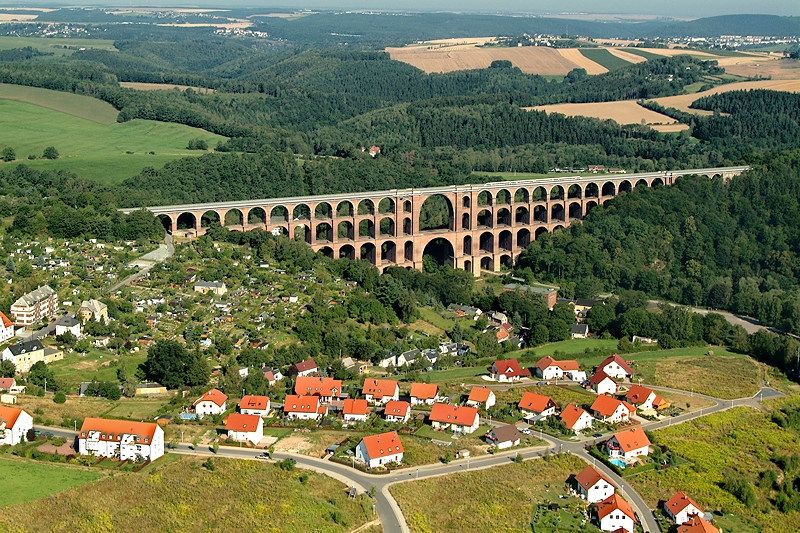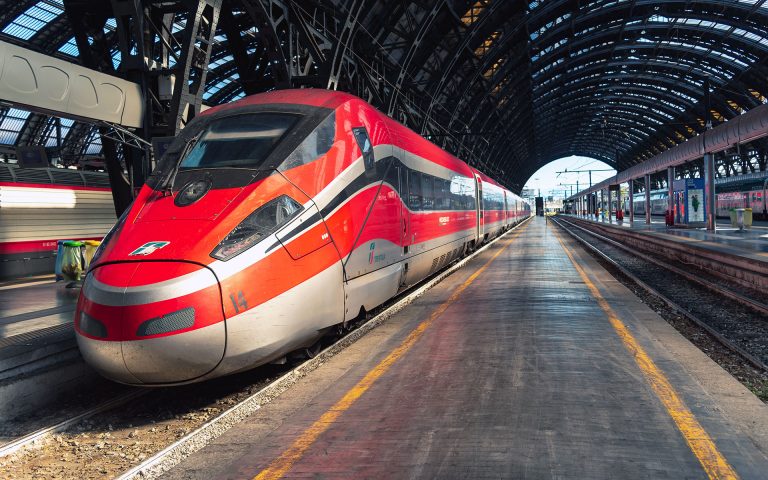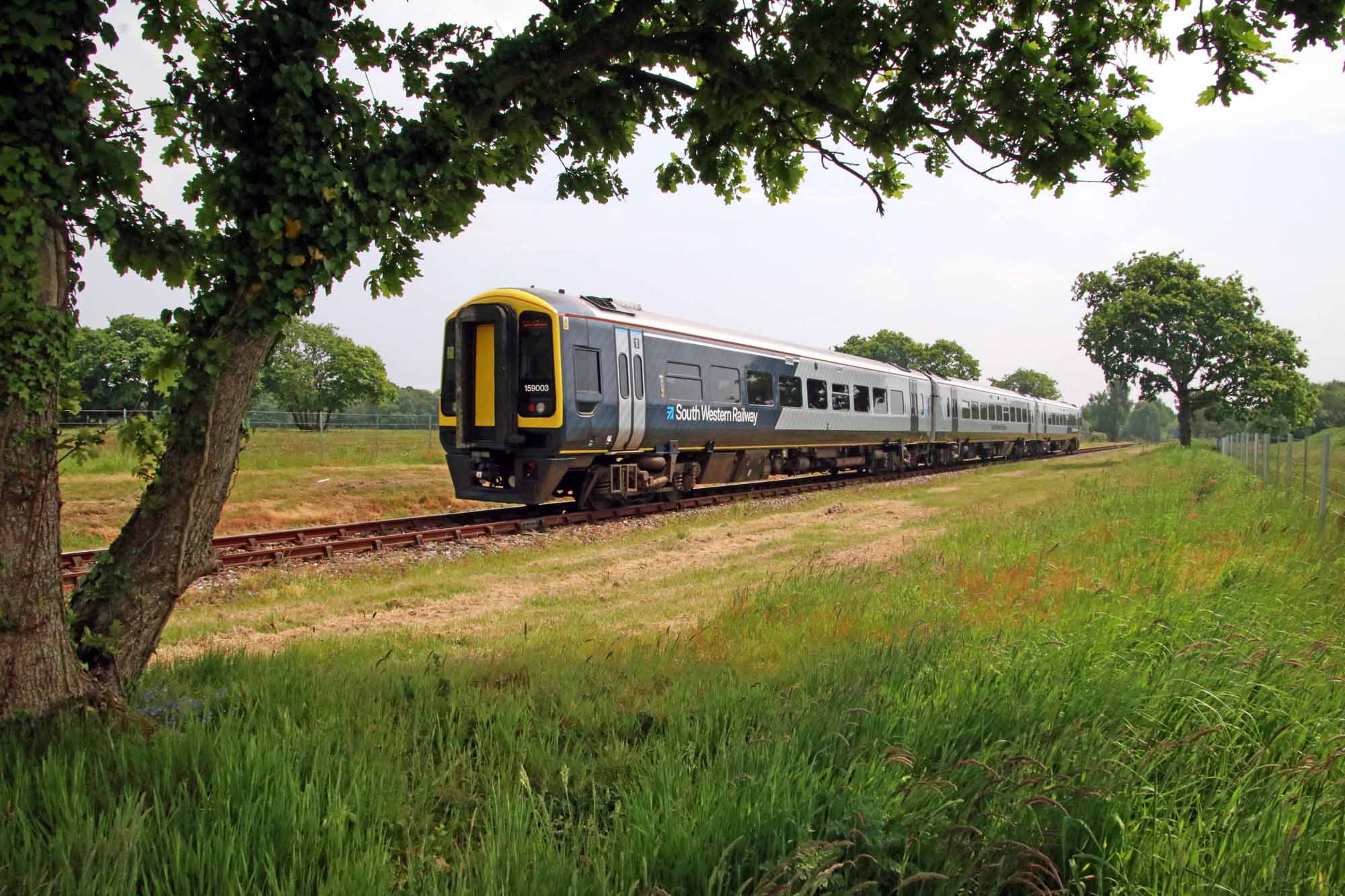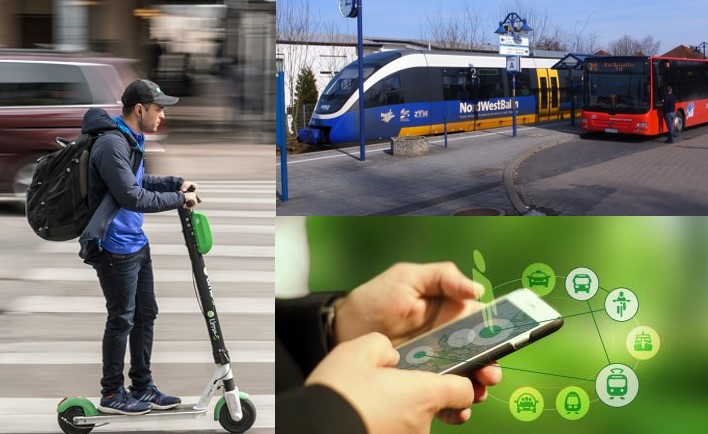11/02/2024 – By Frédéric de Kemmeter – Railway signalling and freelance copywriter – Suscribe my blog
🟧 Back to homepage 🟧 See our brief news 🟧 UK 🟧 China 🟧 Japan 🟧 USA 🟧 the rest of the world
Austria – Baltic States – Czech Republic – Finland – France – Germany – Italy – Netherlands – Norway – Poland – Portugal – Republic of Ireland
– Slovakia – Spain – Sweden – Switzerland – Ukraine
The fight against global warming has led to the idea that the train could be one of the solutions to decarbonise our frantic travel. But can it replace transport for the whole of our activities?
Mobility by numbers
According to Eurostat data, transport accounted for more than 24% of emissions in Europe. Within this figure, the automotive sector accounts for more than 17% of emissions. Another statistic shows that transport is the only sector in which the proportion is growing, raising fears that in a few years’ time we will have reached the 30% mark. This development is clearly not sustainable.
In the end, it doesn’t matter what the figures are: they call for urgent action to contain this growth. But the action to be taken is the subject of heated debates, much of it ideological. Why? Because transport goes to the very heart of our mobility, in other words, access to all our weekly activities. People are all pretty green when you ask them, but insidiously they want their neighbour to make the effort, « because personally, I can’t ».
Any excuse is good enough to strongly defend our weekly activities. Sport, physio, psychologist, hospital visit, evening classes to become an engineer or bricklayer, evening work (restaurant), seminar on the other side of the world, meetings of all kinds, we can list thousands of activities that everyone will describe as unmissable. Some even argue that these journeys are necessary, if only to maintain social links. it is up to the individual to decide…
Transport goes to the very heart of our mobility, in other words, access to all our weekly activities
The big question is which of these countless activities is likely to put you on a low-carbon train rather than a polluting SUV. This is where we can see the limits of certain ideologies, which advocates taking the train or bicycle in all circumstances. As we all know, trains are not suitable for all our activities.
The train is where it is, in other words where there are tracks and stations. In other words, it is far from covering every hectare of the country. It is far from serving every district of a town, whether it has 50,000 or 500,000 inhabitants. In almost all cases, the places where people live (universities, schools, hospitals, public offices,…) are never close to a station, but far from it. This means either walking or taking another form of transport, with the enormous time losses that this can entail.
Cities vs provinces
Another contradiction in the debates concerns the opposition between those who live in the city and those who live outside. When you analyse the countless articles and posts by various associations, the impression is that everyone lives in the city and that the provinces are like the desert of Andalusia. The problem with this perception is that it provides solutions tailored to urban profiles and never to those living in the provinces.

France has paid the price for this misguided perception, with the « gilets jaunes » revolt, i.e. people who have nothing to do with the bustling urban world that rides electric scooters to join their startup. The world of the province is not just farmers (who are very much in the minority), but people with various incomes that living spaces are very scattered, which implies the use of cars. Many analyses are mistaken in suggesting that people from the provinces represent a minority population. In reality, the opposite is true.
A vast part of rhenan Europe is home to hundreds of small towns and villages teeming with people who need to travel a lot
In the crescent stretching from Manchester to Bologna, urban dwellers are in the minority, because this wealthy part of Europe is home to hundreds of small towns and villages teeming with people who have a great need to travel by car. Even if you have « everything around you », a visit to the doctor or an 8pm meeting with the football club requires a journey of between 5 and 10 kilometres, sometimes in the rain. It’s easy to see why the magical solution of electric scooters are useless in this world.
Dispersal is for example the people who live next to the train but without a station, as shown in these photos from Germany and Switzerland.


Accessibility
But the question that concerns us most is how much use is made of the train in these millions of different journeys. Trains are used for journeys to places that are close to a station, or that only require a 5 to10-minute walk. Or when public transport makes it possible to reach a school, an administration or a hospital in a remote area, which is often the case.
For example, Leeds University (UK) can be reached from the main railway station in 14 to 18 minutes on foot, or 10 to 14 minutes by bus. In Liège, getting to the Sart Tilman university campus takes 15 minutes by bus, 41 minutes by bike and… 1 hour 23 minutes on foot! In Mannheim (DE), getting to the university hospital (Haupteingang und Verwaltung des Universitätsklinikum) from the main railway station takes 30 minutes on foot or between 16 and 24 minutes by bus. But these are urban examples. What about outside the city?
The train is not just a question of price or the ideology of free travel
In a semi-rural environment, « having everything around you » means that your favourite gynaecologist is 10 km to the north, that your Thursday evening sport club is 6 km to the south-east, that all your shopping is 8 or 10 km to the west and that the town council meeting is 3 km to the south. That’s the reality of the provincial’s world and this environment is not very conducive to using the train, especially when it comes to local or short-distance traffic.
Take the example of David and Lisa, who live with their two children at « My House » (yellow). Their village has only one bakery and one grocery shop. Perfect for everyday life. But when it comes to other places to live (in green), they’re scattered around neighbouring villages and travelling by car is almost compulsory. Luckily, Liza has a train station 5km away (white), so she can get to her workplace in a town 45km away.
This is a typical example of the lives of millions of Europeans, who will not be applying solutions designed for the city here. David and Lisa have limited use of the train in their lives, despite the presence of a line with 3 trains per hour.

In general, whether in town or country, using the train is not just a question of price or the ideology of free travel. The use of the train must correspond to your weekly activities, and this is not always the case. Many people have sill need their car for various activities. Some activities take only 30 minutes for a visit. With a car (or a bike), you don’t must wait the next train, you go directly for your next activity. That’s the reason why the €49 Deutschland Ticket has still not emptied the boulevards of Stuttgart, Nuremberg or Hanover. Luxembourg’s ring road is still just as congested, despite free rail and public transport.
On the web, you’ll find critics of these arguments who’ll tell you that it’s all a question of organisation, and that it’s perfectly possible to combine several activities according to train timetables. Probably for people who have only one activity per day…
Improvements

The best solutions will be first found in the cities. The concentration, despite the dispersal, of numerous living areas and good public transport coverage of all districts is already a first step, and this is more or less what is practised in cities from Manchester to Bologna.
The second important thing is not so much the price as the ease of access. The Deutschland Ticket is praised for its ease of use, which banishes borders between transport companies and the every man for himself approach to ticketing. Free travel to Luxembourg, Dunkirk or Tallinn also offers the advantage of not having to worry about how much it costs and how to pay.
If we combine good public transport coverage with intermodal ease of use at ticket level, we can already make a great deal of progress in terms of mobility. The use of the train from the provinces to medium-sized towns can then be greatly increased. This is to some extent what the new metropolitan networks (SERM) introduced by a new law in France are all about.

On the other hand, the semi-concentrated housing in provinces and the dispersal of living areas make it impossible to envisage a modal shift, with the exception of one point: concentrating shops, sports halls, training centres and doctors’ surgeries in one place. Some large villages are doing this, but it poses difficulties in terms of realstate ownership, environmental permits, etc.
One solution is to bring all these living areas and housing back close to a station, on land that the railway no longer uses. This requires intellingence, so that at last station areas are no longer filthy, shunned places.
Conclusion
The train is clearly a mode of transport where there is a lot of room for improvement, but it will certainly not be the solution to all travel needs. At the end of the day, saving the planet means taking each person’s situation into account and adopting a lifestyle where we travel as little as possible. Millions of people don’t live in a city. We might as well bear this in mind rather than attacking the car industry out of pure anti-capitalist ideology… 🟧

Similar topics:
 Want to save the environment? Then you should stop traveling !
Want to save the environment? Then you should stop traveling !
02/11/2020 – Why a climate lockdown and the local economy can put the train at risk? If there is no more travel, there are no more trains. If the economy is local, there are no more freight trains
 The transport decarbonisation plan: by rail but not only
The transport decarbonisation plan: by rail but not only
26/09/2021 – The railways will never make a modal shift alone, simply by virtue of their existence. Other assets are needed, which are the responsibility of the State. For example, regional planning and the configuration of living areasxxxxxxxxxxxxxxxxxxxxxxxxxxxxx xxxxx xxxxxxxxxx xxxxxxxxxx xxxxxxxxxxx
 New homes should only be built near train stations
New homes should only be built near train stations
15/04/2020 – Many people are often accused of preferring the car to the train. With an average share of 10%, it can be estimated that around 90% of Europeans never use the train. Many of us do not live close to a railway station, and getting from point A to destination B by train can often be a big distance and a waste of time. But there is a solution: bringing homes much closer to railway stations.
 Railways: making progress with the existence of other transports
Railways: making progress with the existence of other transports
10/12/2020 – The modal shift to rail will not be promoted by prohibiting other transport modes from progressing, but by meeting the demands of users, whether citizens or industrialists.
 Can the train really replace the plane?
Can the train really replace the plane?
28/06/2021 – The train could replace some 500 to 1000km flights. Mentalities seem to be evolving in this direction and the average travel time would increase. But there are still a number of conditions for this replacement. xxxxxxxxxxxxxxxxxxxxxxxxxxxxx xxxxx xxxxxxxxxx xxxxxxxxxx xxxxxxxxxxx
11/02/2024 – By Frédéric de Kemmeter – Railway signalling and freelance copywriter – Suscribe my blog
🟧 Back to homepage 🟧 See our brief news 🟧 UK 🟧 China 🟧 Japan 🟧 USA 🟧 the rest of the world
Austria – Baltic States – Czech Republic – Finland – France – Germany – Italy – Netherlands – Norway – Poland – Portugal – Republic of Ireland
– Slovakia – Spain – Sweden – Switzerland – Ukraine

